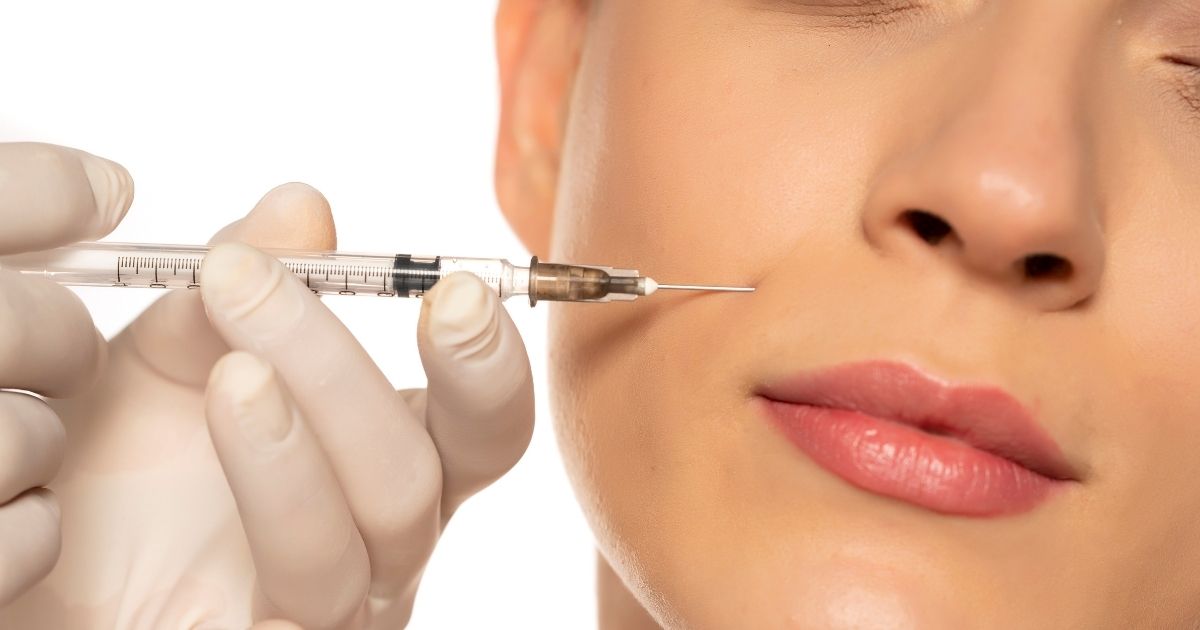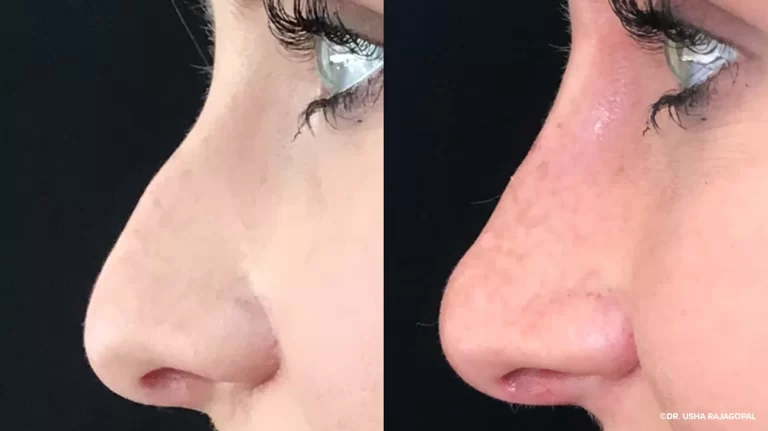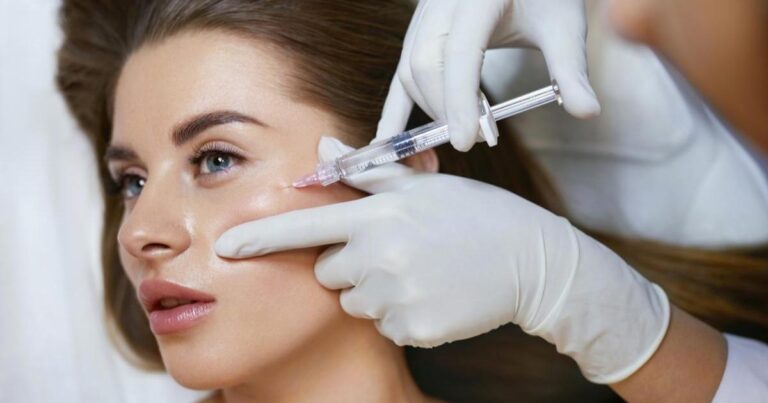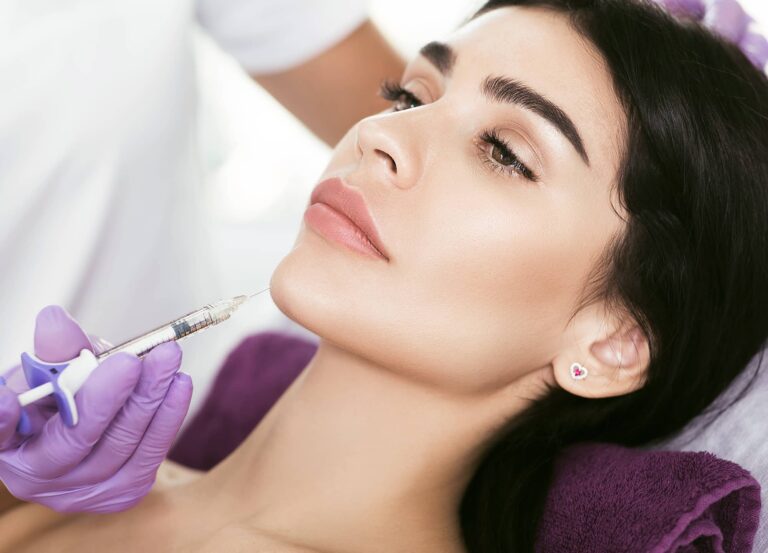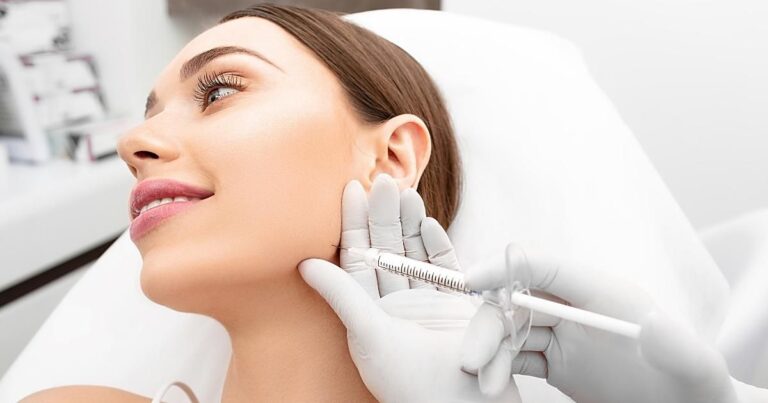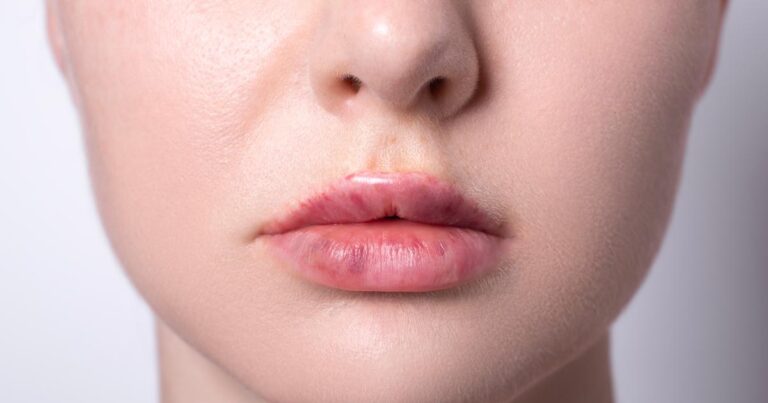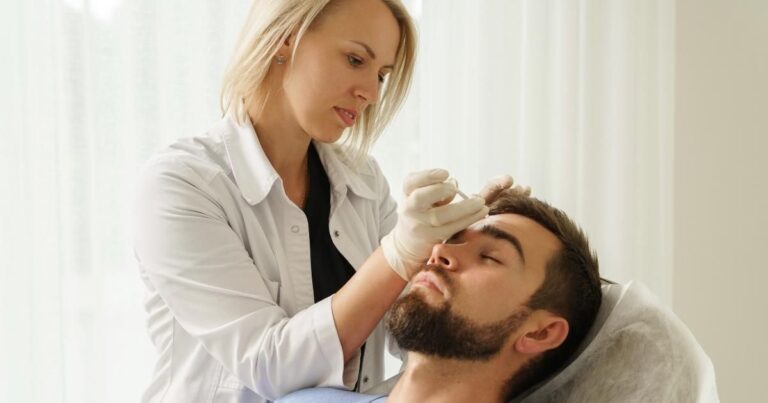Chin aesthetics can dramatically affect the overall harmony of one’s facial features. Enhancing your Chin Non Surgically with Fillers offers a practical, minimally invasive solution for individuals not keen on surgical methods. This approach employs dermal fillers to alter the shape and size of your chin, ultimately improving facial symmetry and boosting your self-confidence.
The Importance of Chin Non Surgically with Fillers
The chin plays a vital role in defining the balance and harmony of the face. It can significantly influence facial aesthetics, affecting perceptions of attractiveness and character. Non-surgical chin enhancement offers an effective solution for refining chin aesthetics without the risk and recovery time associated with surgery.
- A well-defined chin can contribute to an attractive jawline and facial profile.
- Non-surgical chin enhancement is a versatile procedure that can address various aesthetic concerns.
- This approach is beneficial for correcting a weak or receding chin, enhancing a square or pointed chin, and creating a more balanced facial appearance.
Benefits and Suitability
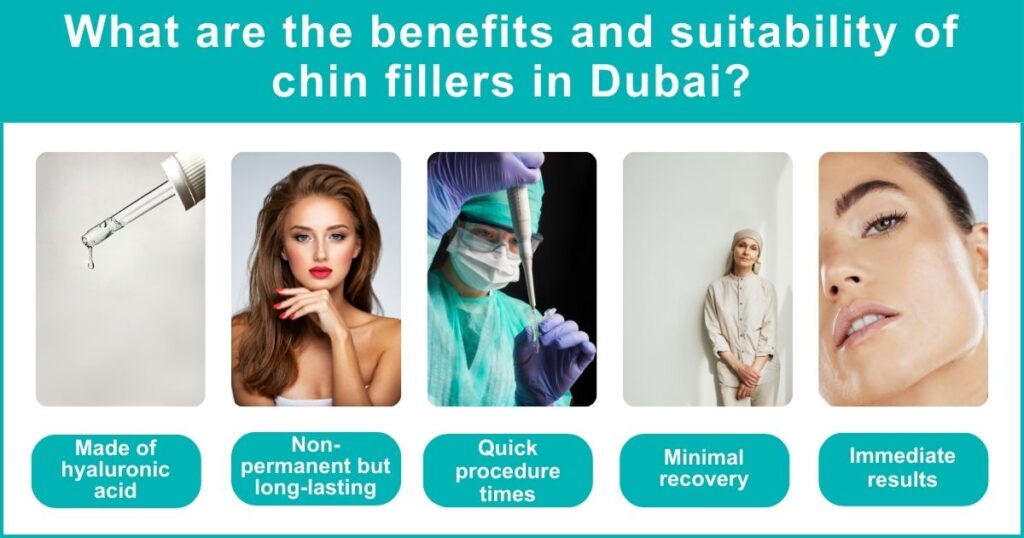
Chin fillers in Dubai are made of hyaluronic acid, naturally occurring in the body and adding volume to the skin. They provide a non-permanent but long-lasting solution for individuals seeking chin enhancement. They suit most individuals, offering numerous benefits such as quick procedure times, minimal recovery, and immediate results.
- Hyaluronic acid fillers can stimulate collagen production, leading to natural-looking results.
- Chin fillers can be carefully tailored to each individual’s facial structure and aesthetic goals.
- It is visible immediately after the procedure, and the results typically last for at least a year.
Non-Surgical Chin Enhancement: What to Expect?
The non-surgical chin enhancement procedure is a straightforward process carried out in a clinical setting. It typically involves the application of a topical anaesthetic, followed by precise injections of the chosen filler into the chin area. The result can be seen immediately following the procedure, which usually takes an hour.
Book A Consultation With Dr Tarek Bayazid
Top-rated Plastic Surgeon For Fillers in Dubai
Installment Plan Available
- Before the procedure, the practitioner will conduct a thorough consultation to understand the patient’s aesthetic goals and to plan the treatment accordingly.
- The procedure involves minimal discomfort, and patients can return to their daily activities immediately.
- Any minor side effects, such as swelling or bruising, will usually subside a few days following the procedure.
Different Types of Fillers for Chin Enhancement
Hyaluronic acid-based fillers are most popular for non-surgical chin enhancement due to their safety and effectiveness. Other options include calcium hydroxylapatite and poly-L-lactic acid fillers, each offering unique benefits. The choice of filler will depend on the patient’s specific needs and the practitioner’s expertise.
| Type of Filler | Description | Advantages | Average Duration of Results |
| Hyaluronic Acid | A naturally occurring substance in the skin that adds volume and stimulates collagen production | Immediate results, versatile, safe, minimal side effects | Six months – 1 year |
| Calcium Hydroxylapatite | A mineral-like compound found in bones suspended in a gel | Provides firmer results, is helpful for more profound volume enhancement, stimulates collagen production | 1 – 2 years |
| Poly-L-lactic Acid | A biodegradable, biocompatible synthetic substance stimulates collagen production. | Provides gradual results over several months, longer-lasting | Up to 2 years |
Non-Surgical vs Surgical Chin Enhancement: A Comparison
Non-surgical chin enhancement with fillers provides a safer, less invasive alternative to surgical procedures such as chin implants or genioplasty. Infections, nerve damage, and long recovery times are risks associated with surgery, even if it can deliver permanent results.
Non-surgical procedures offer a flexible, reversible option with immediate results and minimal downtime.
| Factor | Non-Surgical Chin Enhancement | Surgical Chin Enhancement |
| Procedure | Injection of fillers or placement of chin implants | Repositioning or augmentation of the chin bone |
| Recovery time | Minimal, with some redness and swelling lasting up to two weeks | 7-10 days of healing, with swelling and bruising potentially persisting for a few weeks; it can take up to four weeks to see the final results |
| Risks | Minimal, but may include infection, bruising, and allergic reaction | Carries the risks associated with any surgery, such as an adverse reaction to anaesthesia, infection, bleeding, and scarring |
| Cost | Typically less expensive | More expensive |
| Duration of results | Fillers typically last up to a year, while implants can last for many years | Permanent |
| Ideal candidates | Those who want a subtle change to their chin | Those who have a structural deficiency or inadequate bone in the chin area |
Post-Treatment Care: What to Do After Non-Surgical Chin Enhancement
After undergoing non-surgical chin enhancement, following your practitioner’s post-care instructions is crucial to ensure optimal results. It may involve avoiding strenuous exercise, direct sun exposure, and excessive facial movements for a short period. Proper skincare, including hydration and protection against the sun, can also prolong the effects of the treatment.
| Post-Treatment Care | Purpose | Duration |
| Avoid strenuous exercise | To minimise the risk of filler migration and swelling | 24-48 hours |
| Avoid direct sun exposure | Sunlight can degrade hyaluronic acid fillers | At least 48 hours, ongoing sun protection recommended |
| Avoid excessive facial movements | To allow the filler to settle properly | 24-48 hours |
| Maintain proper skincare (hydration, sun protection) | Enhances longevity of the treatment results | Ongoing |
Longevity and Maintenance of Chin Fillers: How Long Do They Last?
The longevity of chin fillers largely depends on the type of filler used, the individual’s metabolic rate, and the application area. On average, results can last between six months to two years. Regular maintenance sessions are recommended to maintain the desired aesthetic effect.
- Hyaluronic acid fillers generally last six months to a year, although this can vary between individuals.
- Several fillers, including poly-L-lactic acid, can last two years because of their collagen-stimulating properties.
- Regular maintenance treatments can help sustain the results and enhance the overall aesthetic outcome.
Non-Surgical Chin Enhancement: Risks and Side Effects
As with any medical procedure, non-surgical chin enhancement carries potential risks and side effects. These might include minor swelling, redness, and bruising at the injection site. While serious complications are rare, choosing a qualified and experienced practitioner is crucial to minimise potential risks.
| Potential Side Effect | Description | Prevention | Treatment |
| Minor Swelling | A common reaction after the procedure usually subsides within a few days | Avoid strenuous activities post-procedure | Use an anti-inflammatory medication over the counter, apply a cold compress, and elevate the area. |
| Redness | Temporary reaction at the injection site | Choose a qualified and experienced practitioner | A cold compress should subside on its own |
| Bruising | Potential response to the injection usually subsides within a week | Avoid blood-thinning medications and alcohol before the procedure | Topical Arnica cream should decrease on its own |
| Infection | Infrequent complication | Choose a reputable clinic and practitioner, and ensure the procedure is performed under sterile conditions. | Antibiotic treatment, seek immediate medical attention. |
Before and After Non-Surgical Chin Enhancement
Non-surgical chin enhancement can significantly change facial aesthetics, delivering a more balanced and harmonious facial structure. Before-and-after images can help individuals understand the potential outcomes and set realistic expectations. It’s crucial to remember that everyone’s results will be unique and tailored to their individual facial anatomy and aesthetic goals.
- Before-and-after images provide a visual representation of the potential outcomes of the procedure.
- Realistic expectations are key to satisfaction with the results.
- Each individual’s results will be unique, depending on their initial chin structure and the specific techniques used during the procedure.
Enhancing your chin non-surgically with fillers offers a flexible, efficient, low-risk method to achieve a more balanced and appealing facial profile. While it’s important to consider potential risks and to maintain realistic expectations, this procedure can provide significant aesthetic improvement without the downtime and complications associated with surgical interventions. Ready to explore this innovative route to accentuating your chin and refreshing your appearance?
Don’t wait any longer! Transform your facial aesthetics with the expert team at Dr Tarek Bayazid. Click here to Book a Consultation and embark on your journey towards a more harmonious and confident you!
